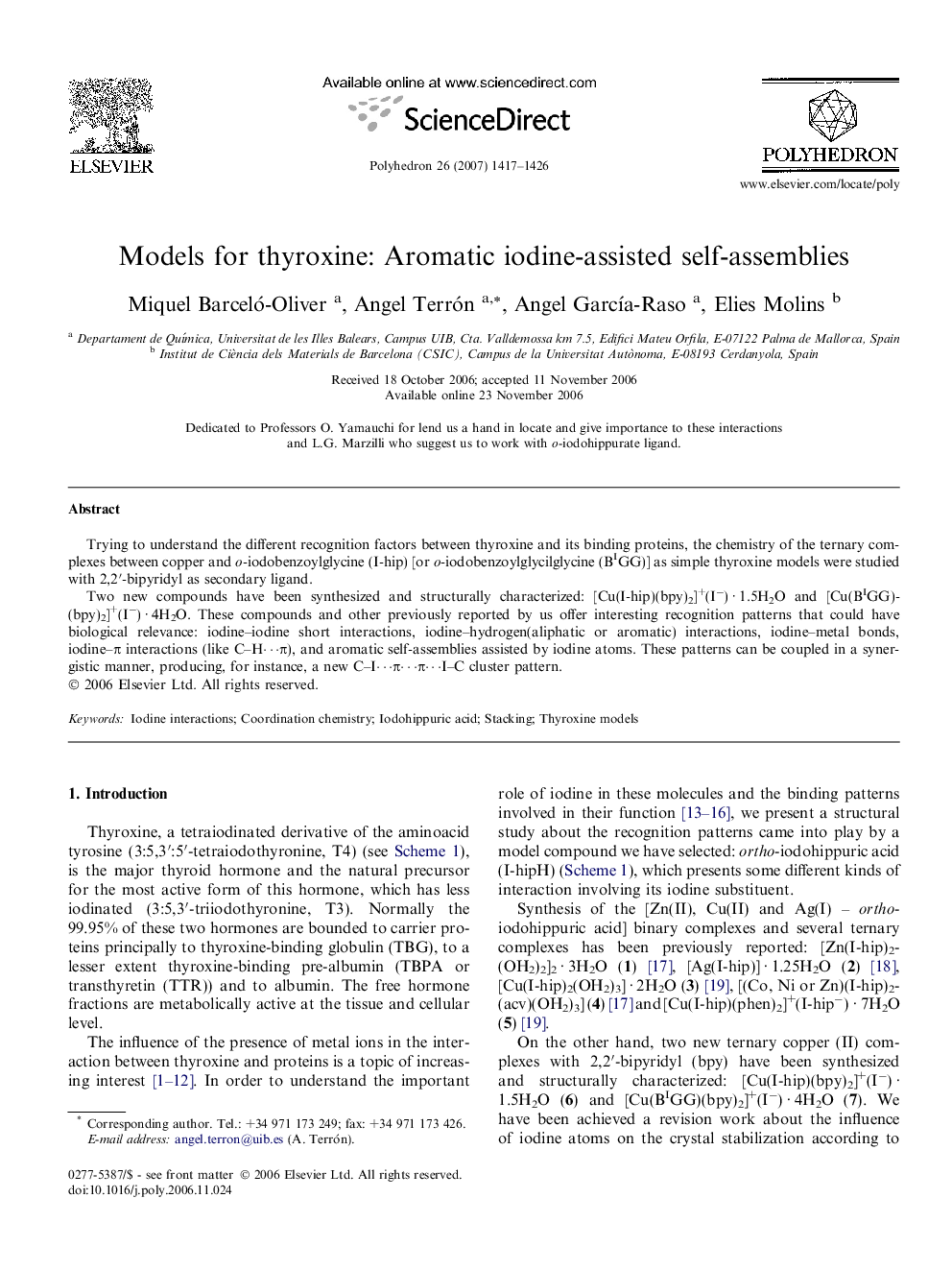| Article ID | Journal | Published Year | Pages | File Type |
|---|---|---|---|---|
| 1338724 | Polyhedron | 2007 | 10 Pages |
Trying to understand the different recognition factors between thyroxine and its binding proteins, the chemistry of the ternary complexes between copper and o-iodobenzoylglycine (I-hip) [or o-iodobenzoylglycilglycine (BIGG)] as simple thyroxine models were studied with 2,2′-bipyridyl as secondary ligand.Two new compounds have been synthesized and structurally characterized: [Cu(I-hip)(bpy)2]+(I−) · 1.5H2O and [Cu(BIGG)(bpy)2]+(I−) · 4H2O. These compounds and other previously reported by us offer interesting recognition patterns that could have biological relevance: iodine–iodine short interactions, iodine–hydrogen(aliphatic or aromatic) interactions, iodine–metal bonds, iodine–π interactions (like C–H⋯π), and aromatic self-assemblies assisted by iodine atoms. These patterns can be coupled in a synergistic manner, producing, for instance, a new C–I⋯π⋯π⋯I–C cluster pattern.
Graphical abstractTrying to understand the different recognition factors between thyroxine and its binding proteins, the chemistry of the ternary complexes between copper and o-iodobenzoylglycine (I-hip) [or o-iodobenzoylglycilglycine (BIGG)] as simple thyroxine models were studied with 2,2′-bipyridyl as secondary ligand.Figure optionsDownload full-size imageDownload as PowerPoint slide
